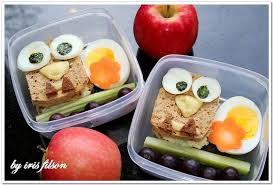Courtesy of leading nutrition experts:
Plan healthy, tasty breakfasts. Offer children a lean protein at breakfast such as eggs, string cheese, Canadian bacon, turkey bacon or hummus, Sothern says. Serve them fresh fruit such as berries. Or whole-grain cereal with nuts is another option. Top off the meal with a glass of fat-free or 1% low-fat milk or a carton of low-fat yogurt, she says.
• Discourage mindless munching. Don’t let kids eat in front of the TV or computer and gradually restrict all eating and drinking, except for water, to the kitchen counter, table or dining room, Sothern says.
• Get them involved. Take kids to the grocery store. Skip the soda, cookie and candy aisles and have children select one fruit and vegetable to try each week. At home, include children in lunch and dinner preparation, Sothern says.
• Reinstate family traditions. Insist on family dinners, set the table with real cloth napkins, light candles and play soft music in the background to encourage discussion. Compliment the children on their healthy food selections, cooking and manners, she says.
• Get some shut-eye. Allow kids no more than one hour of media time before bedtime. Try to make sure they get the required 9 to 10 hours of sleep a night. Research shows that lack of sleep equals unwanted weight gain, behavioral problems and difficulty concentrating the next day, Sothern says.
• Offer a nutritious starter course. Pennsylvania State University research shows that adults who eat a broth-based bowl of vegetable soup; a large, low-calorie, lettuce-based salad; or an apple before a meal consume about 110 to 190 fewer calories at the meal, including the calories in that first course. The same idea could work with kids, says Barbara Rolls, a professor of nutritional sciences at Penn State. They’ll not only fill up on fewer calories, but they’ll be eating a healthy first course.
• Trick their tummies. Add their favorite fiber-rich vegetables — such as spinach, zucchini, yellow squash, broccoli, carrots, peppers and onions — to lasagna, casseroles, pasta dishes and pizza. The veggies lower the calories and increase the nutrients in each bite, Rolls says. Also increase the proportion of vegetables in stir-fry dishes, broth-based soups and stews and extra vegetables to sandwiches. Substitute vegetable or fruit purees for half or even two-thirds of the added fat in quick breads and muffins, she says.
• Use smaller plates. A study of first-graders showed that most kids served themselves more at lunch (about 90 calories more) when they used adult-sized dinner plates compared with using child-sized plates, which is about the size of an adult salad plate. “We know that adults over-serve themselves with larger plates, and this study says the same holds true for children. Using smaller plates at home may promote healthy child portion sizes,” says Jennifer Orlet Fisher, an associate professor of public health at Temple University in Philadelphia.
• Teach kids to dance. Tell them you’re playing Dancing with the Stars and let them waltz, do the cha-cha-cha or swing dance, Sothern says. This active time will burn four to five times more calories than sitting and improve their overall health.
• Swap sedentary time for active time. Kids only burn 30 to 50 calories when they are sitting for an hour, but they burn 400 to 500 calories in an hour if they are playing tag, dancing or doing field sports, she says. The government’s physical activity guidelines say children and teens should do an hour or more of moderate-intensity to vigorous aerobic physical activity each day. Sothern recommends they do at least two hours of physical activity a day.
• Play outside with your children. Moms and dads should teach their kids to throw, pitch, catch, pass, jump and ride a bike because their kids may not be learning these important skills at school.
• Encourage physical-activity breaks. “There is a lot of evidence that kids should not sit still for more than 60 minutes at a time,” says Penny Gordon-Larsen, a professor of nutrition at the University of North Carolina, Chapel Hill. When kids are doing their homework or on the computer, they need to get up regularly and move around or consider standing while they are working, she says. Every little bit of activity counts. Have them do at least 20 to 30 minutes of physical activity after school, such as shooting hoops, biking, playing soccer, jumping rope, dancing, walking or playing a fitness-related video game, Gordon-Larsen says.
• Steer clear of sugary drinks. This includes regular sodas, sweet teas, high-calorie specialty coffees, energy drinks and juices, Gordon-Larsen says. “It’s such an easy way to cut out excess sugar and calories,” she says. Instead offer water and low-fat milk, even low-fat chocolate milk.
Click on the link to read 10 Tips for Promoting Kids’ Healthy Eating
Click on the link to read my post on Tips For Parents on Packing a Healthy Lunch Box
Click on the link to read my post on Getting Kids to Eat Healthy Food
Click on the link to read my post on 6 Strategies for Promoting Healthy Food to Kids.
Click on the link to read 5 Ways to Get Kids Active
Click on the link to read Food Giants Marketing Unhealthy Kids Foods as Healthy
















